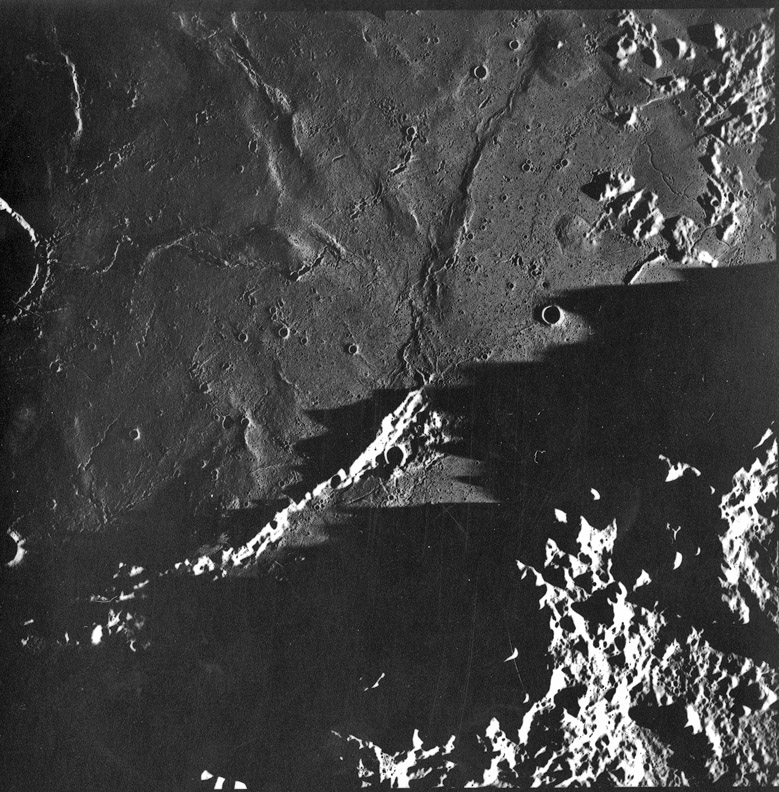
Apollo image fromLPI Apollo Image Atlas
We are sending spacecraft back to the Moon and yet there are 35 year old images like this from the Apollo Metric camera that have never been adequately studied. Wallace is the crater at far left, still mostly beyond the terminator, and Huxley is the small crater near the topmost shadow. The dramatic shadows are cast by the Apennine Mountains, and Mare Imbrium, which normally looks nearly featureless, is full of detail revealed by the low oblique illumination and the very high resolution. Narrow rilles are everywhere, as they are on most maria with low Sun, Metric Camera images. The rilles are channels that deposited the lava we see. At the very top of the image are two large swells surrounding small mountains. And just north of Huxley there is a diferent type of swell; also notice the domed look of the smoother lava cut by the rille at upper right. As we saw at the Valentine Dome and to its north, swells often surround low peaks - there must be a reason why, but I haven’t figured it out. Yet.
Technical Details:
Apollo 17 Metric Camera image AS17- M-1829
Related Links:
Rükl charts 21 & 22
COMMENTS?
Click on this icon File:PostIcon.jpg at the upper right to post a comment.



